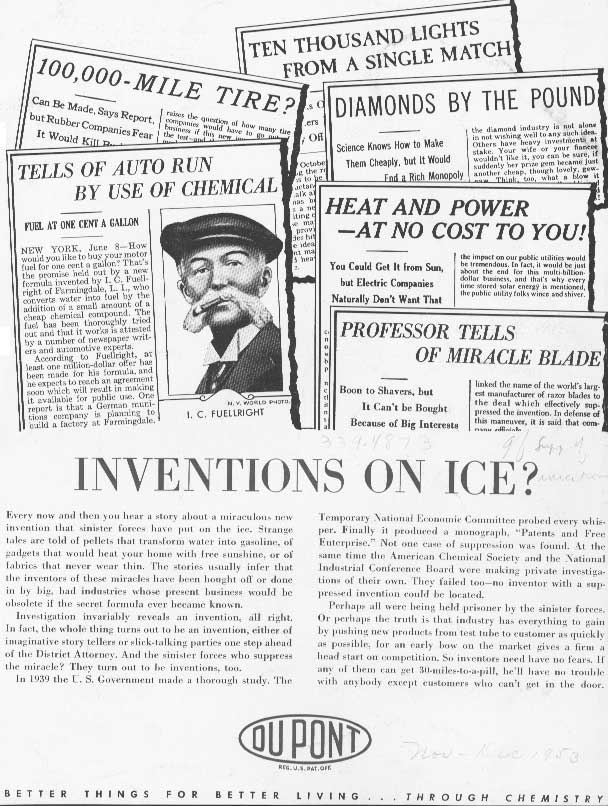As consumers had increasingly larger amounts of discretionary income [doubling in the period after the depression up to the post Korean War period], questions arose about how to make wise choices. The earliest advice was simple - buy the most expensive product and you will be assured of the best quality. Do you agree?
The Consumer Movement in New Jersey
Where did the movement move? CONSUMERS RESEARCH was a nonprofit institution organized under the laws of New Jersey. It was located in Washington, New Jersey, in the rural northwestern part of the state. It was formed as a result of the success of the book Your Money's Worth: A Study in the Waste of the Consumer Dollar written by Stuart Chase and F.J. Schlink in 1927. Chase was a CPA [certified public accountant] and director of the Labor Bureau. He also worked for the Federal Trade Commission. Schlink was a mechanical engineer and a physicist. He worked for the National Bureau of Standards and was Assistant Secretary of the American Engineering Standards Commission. Their mission was to use scientific testing on consumer products so that the average consumer could make informed decisions.. Groups such as women's clubs, labor unions, settlement houses, milk cooperatives, teacher's organizations and voters' alliances represented large purchasing blocs. Scientific testing had been used to develop and improve products, but this information had been generally restricted to manufacturers and producers. The argument was made that the ultimate consumer benefited because this would lead to the improvement of products. The consumer had more money to spend and became a more powerful force in the American economy. However, he still needed protection in the marketplace. Look at the headlines below - how many would you believe?
